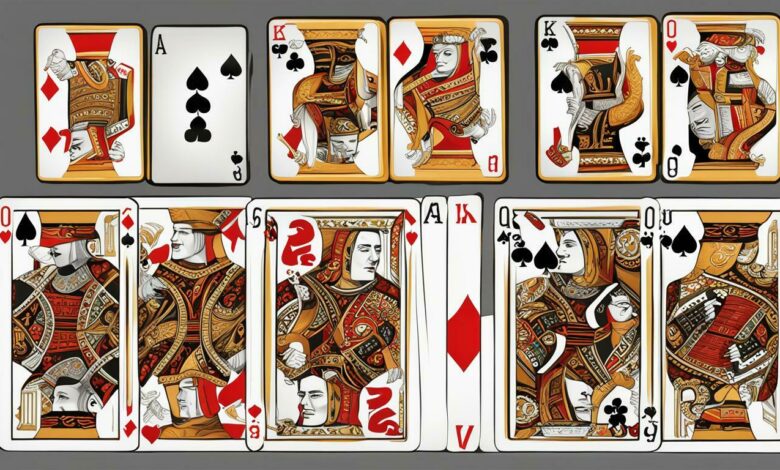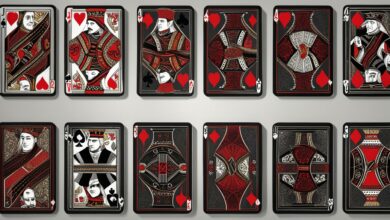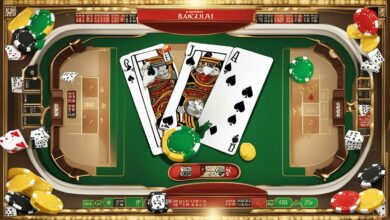Soft 17 vs Hard 17 Blackjack: Master the Difference & Boost Your Game

For seasoned players and beginners alike, blackjack is a thrilling game of strategy, luck, and skill. It’s a game that requires players to make quick, informed decisions based on the cards they hold and the dealer’s upcard. One crucial factor that can impact the player’s success in blackjack is the difference between a soft 17 and a hard 17 hand. Understanding this difference and the related strategies can significantly enhance the player’s gameplay and chances of winning.
Key Takeaways
- Soft 17 and hard 17 refer to specific hands in blackjack that impact player strategy and odds of winning.
- Soft 17 is a hand that contains an Ace and must be treated differently from a hard 17, which contains no Ace or an Ace valued at 1.
- The rules surrounding soft 17 dictate that the dealer must hit, giving the player certain advantages in gameplay.
- The strategy for playing soft 17 in blackjack involves considering factors such as the dealer’s upcard and the total count of the cards.
Soft 17 Blackjack Strategy: When to Hit or Stand
Knowing when to hit or stand on a soft 17 hand in blackjack is crucial for optimizing your gameplay and increasing your chances of winning. While basic strategy dictates that you should always hit on soft 17, there are certain scenarios where standing may be the better option. Here’s what you need to consider:
- Dealer’s Upcard: The dealer’s upcard plays a significant role in your decision to hit or stand on a soft 17 hand. If the dealer’s upcard is a 2, 3, 4, 5, or 6, hitting is the best option as their chances of busting are higher. If the dealer’s upcard is a 7 or higher, standing becomes the better choice as there is a higher chance the dealer will end up with a higher total.
- Number of Decks: The number of decks in play also influences your decision. In a single deck game, hitting on a soft 17 is recommended as there are fewer cards remaining, making the chances of drawing a card that improves your hand higher. In multi-deck games, standing on a soft 17 may be the better option to conserve the value of your hand.
- Counting Cards: If you are counting cards, hitting on a soft 17 can be advantageous. If the count is high, hitting can result in drawing a high-value card and improving your hand. However, if the count is low, standing may be the better option as the chances of busting increase.
Ultimately, the decision to hit or stand on a soft 17 hand should be based on the specific circumstances and factors at play. Taking into account the dealer’s upcard, the number of decks in play, and the card count can help you make an informed decision and improve your chances of winning.
Hard 17 Blackjack Strategy: When to Hit, Stand, or Double Down.
Playing a hard 17 hand in blackjack can be tricky, as the decisions you make can have a significant impact on your chances of winning. It is important to understand the different strategies and options available to you when you face a hard 17 hand.
When deciding whether to hit or stand with a hard 17, the first factor to consider is the dealer’s upcard. If the dealer has a 7 or higher, it is generally recommended to hit, as you are likely to be beaten by the dealer’s strong hand. However, if the dealer has a 2 through 6 upcard, it is better to stand, as the dealer is more likely to bust.
Another key factor in deciding whether to hit or stand with a hard 17 is the number of decks in play. If you are playing with multiple decks, it is generally recommended to stand on a hard 17, as the chances of the dealer busting are higher. However, if you are playing with a single deck, it is better to hit, as the odds of improving your hand are greater.
In certain situations, it may also be appropriate to double down with a hard 17. This is particularly true if the dealer has a weak upcard, such as a 2 through 6, and you have a hand that can be improved with one more card. Doubling down will result in a higher payout if you win, but it is also a riskier move.
| Dealer’s Upcard | Your Hand | Recommended Play |
|---|---|---|
| 2-6 | Hard 17 | Stand |
| 7-Ace | Hard 17 | Hit |
| Any | Hard 17 | Double Down (in certain situations) |
Ultimately, the best strategy for playing a hard 17 hand in blackjack will depend on a variety of factors, including the specific table rules, the number of decks in play, and the dealer’s upcard. By carefully considering these factors and applying sound strategy, you can improve your chances of winning with a hard 17 hand.
Key Differences Between Soft 17 and Hard 17 in Blackjack
When playing blackjack, it is crucial to understand the difference between a soft 17 and a hard 17, as it significantly impacts your gameplay strategy. In this section, we will highlight the key differences between these two hands.
A soft 17 hand in blackjack consists of an ace and a six. In this hand, the ace is considered as having a value of 11, but it can also be counted as 1 if needed. The soft 17 rule in blackjack stipulates that the dealer must hit on a soft 17. This means they must take another card from the deck to try and improve their hand.
In contrast, a hard 17 hand in blackjack is a hand that does not contain an ace or a hand where the ace has been counted as 1. For example, a hand consisting of a ten and a seven is regarded as a hard 17. The blackjack rules for a dealer on a hard 17 may vary depending on the specific table rules, but generally, the dealer must stand.
The difference between soft 17 and hard 17 in blackjack is significant as it impacts the player’s strategy. When facing a soft 17 hand, the player has more flexibility and can opt to hit, stand, or double down, depending on the dealer’s upcard. On the other hand, when facing a hard 17, the player’s options are more limited as hitting may cause them to bust.
It is worth noting that statistically, a soft 17 hand offers the player a better chance of improving their hand compared to a hard 17 hand. This is because the ace in a soft 17 hand can be counted as a 1 or 11, providing more flexibility in the player’s strategy.
Overall, understanding the difference between soft 17 and hard 17 in blackjack is crucial for optimizing your gameplay strategy and enhancing your chances of winning.
You may like: Spanish 21 vs Blackjack: Uncover the Exciting Differences
Conclusion
Mastering the difference between soft 17 and hard 17 in blackjack can significantly improve your gameplay and increase your chances of winning. Remember, a soft 17 hand is flexible and allows for more options, while a hard 17 hand is more rigid and requires a strategic approach.
By understanding the recommended strategies for playing both hands, you can make informed decisions based on the dealer’s upcard and the overall count of the cards. Additionally, knowing the key differences between soft 17 and hard 17 can help you adjust your gameplay and seize any advantages that may arise.
So next time you sit down at the blackjack table, keep these tips and strategies in mind, and may the odds be ever in your favor. Good luck!
FAQ
Q: What is the difference between soft 17 and hard 17 in blackjack?
A: In blackjack, a soft 17 is a hand that includes an Ace valued at 11, while a hard 17 does not have an Ace or has an Ace valued at 1. The difference lies in the flexibility of the Ace’s value and the options it provides for hitting or standing.
Q: What is the soft 17 rule in blackjack?
A: The soft 17 rule in blackjack states that if the dealer’s hand totals to a soft 17, they must hit, meaning they draw an additional card. This is a rule that applies to the dealer and impacts their gameplay strategy, which subsequently affects the player’s decisions.
Q: When should I hit on a soft 17?
A: The decision to hit on a soft 17 depends on various factors, including the dealer’s upcard and the overall count of the cards. Generally, it is recommended to hit when the dealer’s upcard is strong or when the count favors hitting to improve the hand’s value.
Q: When should I stand on a soft 17?
A: Standing on a soft 17 is often recommended when the dealer’s upcard is weak and the count does not favor hitting. It is a strategy aimed at minimizing the risk of busting and optimizing the chances of winning the hand.
Q: When should I double down on a hard 17?
A: The decision to double down on a hard 17 depends on factors such as the dealer’s upcard, the number of decks in play, and the specific table rules. Generally, doubling down on a hard 17 is not a common strategy, as the risk of busting is higher. However, in certain favorable scenarios, doubling down may be advantageous.
Q: What are the key differences between soft 17 and hard 17 in blackjack?
A: The main difference between soft 17 and hard 17 lies in the presence of an Ace and its value. Soft 17 allows for the flexibility of the Ace’s value, while hard 17 does not. This distinction impacts the player’s strategy, the dealer’s actions, and ultimately, the odds and outcomes of the game.



